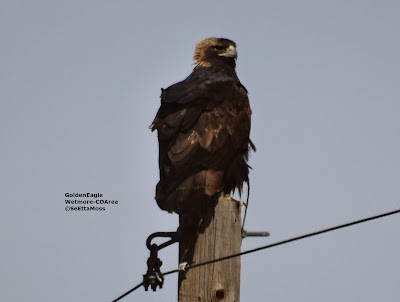In the mix of Gray-crowned Rosy-Finches I thought I saw one or more Brown-capped Rosy-Finches and I believe these photos, at least the top one, show field marks for a female of that species. Birds of North America (BNA) online describes these as follows: "Female similar to male but browns much lighter (contra Clement 1993); feathers of belly, rump, etc., with pink (instead of red) margins that are also narrower and less distinct, or sometimes nearly absent; and crown-patch sometimes less distinct." The Essential Field Guide Companion by Pete Dunn notes that female Brown-capped Rosy-Finches "are plainer and lead-colored." He further notes in reference to the Brown-capped species, "the uniformity in plumage and absence of contrasting gray crown distinguish this species." Clearly these photos show bird(s) without evident pink but BNA indicates that occurs with female Brown-capped Rosy-Finches. SeEtta














